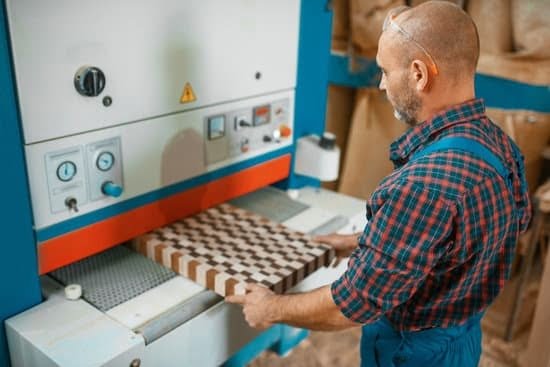Are you wondering how to remove latex paint from finished woodwork? It can be a daunting task, but with the right techniques and tools, it is possible to restore your woodwork to its original beauty. Whether you accidentally splattered paint on your woodwork or you are looking to refinish a piece of furniture, knowing the best methods for removing latex paint is essential.
Removing latex paint from finished woodwork can be a delicate process, as you want to preserve the integrity of the wood while effectively getting rid of the unwanted paint. In this article, we will explore various techniques for safely and efficiently removing latex paint from finished woodwork without causing damage to the underlying surface.
We will begin by discussing how to prepare your workspace and gather the necessary materials for the task. We will also delve into testing a small area to determine the best method for removing latex paint without compromising the wood finish. Additionally, we will explore using chemical paint removers, heat application, sanding and scraping techniques, as well as cleaning and restoring the wood surface after paint removal.
Furthermore, we will provide tips for preventing future paint mishaps and protecting your woodwork in the long run. So, let’s get started on understanding the challenge of removing latex paint from finished woodwork.
Preparing the Workspace
Removing latex paint from finished woodwork can be a tricky task, but with the right materials and precautions, it can be done effectively. Before getting started, it’s important to gather the necessary materials and protect the surrounding area to ensure a smooth and hassle-free paint removal process.
To begin, you will need a few essential materials for removing latex paint from finished woodwork. These include:
- Paint thinner or mineral spirits
- Sandpaper in various grits
- Paint scrapers or putty knives
- Drop cloths or plastic sheeting to protect the floor and surrounding surfaces
- Protective gloves, safety goggles, and a respirator to protect yourself from any fumes or dust
Once you have gathered all the necessary materials, it’s important to prepare the workspace by protecting the surrounding area. Begin by laying down drop cloths or plastic sheeting to cover the floor and any nearby furniture or fixtures. This will help prevent any paint splatters or drips from causing damage to these surfaces during the removal process.
Additionally, make sure to open windows and doors for proper ventilation, as some of the paint removal methods may produce fumes that can be harmful if inhaled. Finally, don’t forget to wear protective gloves, safety goggles, and a respirator to ensure your safety while working with paint removers and other chemicals.
Gathering the necessary materials and preparing the workspace is an essential first step in removing latex paint from finished woodwork safely and effectively. Taking these precautions will help ensure that the paint removal process goes smoothly without causing damage to the surrounding area or putting yourself at risk of exposure to harmful fumes. Use caution when working with chemicals and follow all safety guidelines provided by the manufacturer of your chosen paint remover.
Testing a Small Area
When it comes to removing latex paint from finished woodwork, it is crucial to approach the process with caution to avoid damaging the wood finish. Before diving into the full-scale paint removal, it is important to test a small inconspicuous area to determine the best method for removing the paint without causing harm to the wood. Here are some steps to follow when testing a small area:
1. Select an inconspicuous spot: Choose a small area of the woodwork that is not easily visible, such as behind furniture or in a corner.
2. Gather necessary materials: Grab some cotton balls, a mild solvent like rubbing alcohol or mineral spirits, and a soft cloth.
3. Apply the solvent: Moisten a cotton ball with the solvent and gently rub it on the small area of latex paint.
After conducting this test, observe how the wood finish reacts to determine which method will be most effective in removing the latex paint while preserving the woodwork’s integrity.
Additionally Howtoremove.com suggests this tip when removing latex paint from finished woodwork, “Always work slowly and carefully when testing different methods for removing latex paint from finished woodwork.” This is important because you want to minimize any potential damage to your woodwork while trying out different removal techniques.
Using Chemical Paint Removers
Chemical paint removers can be an effective way to remove latex paint from finished woodwork, but it’s important to use them carefully to avoid damaging the wood finish. Here are step-by-step instructions for using solvent-based paint removers:
1. Prepare the work area: Before you begin, gather all the necessary materials, including the paint remover, gloves, goggles, and a paintbrush or scraper. It’s also important to protect the surrounding area with drop cloths or plastic sheeting to prevent any accidental spills or splatters.
2. Apply the paint remover: Using a brush or scraper, apply a thick coat of the solvent-based paint remover onto the painted areas of the woodwork. Make sure to follow the manufacturer’s instructions for application and safety precautions.
3. Allow time for the remover to work: Let the paint remover sit on the woodwork for the recommended amount of time specified by the manufacturer. This will give it a chance to soften and loosen the latex paint for easier removal.
4. Scrape off the softened paint: Once the recommended time has passed, use a paint scraper or putty knife to gently scrape off the softened latex paint. Be careful not to scrape too hard or you may damage the wood surface.
5. Clean and assess: After removing as much of the paint as possible, clean off any remaining residue with a clean cloth and some mineral spirits or denatured alcohol. Then, assess the wood surface to see if any refinishing or restoration is needed.
By following these step-by-step instructions for using solvent-based paint removers, you can effectively remove latex paint from finished woodwork without causing damage to the underlying finish.
Using Heat to Remove Paint
When it comes to removing latex paint from finished woodwork, using heat can be an effective method for softening the paint and making it easier to scrape off. This technique is particularly useful for intricate or detailed woodwork where sanding or chemical removers may not be practical. In this section, we will explore how to use a heat gun or hair dryer to remove latex paint from finished woodwork.
Using a Heat Gun
A heat gun is a versatile tool that emits a stream of hot air and can be very effective at softening latex paint. To use a heat gun for removing paint from finished woodwork, start by selecting a low setting and holding the gun several inches away from the painted surface.
Gradually move the heat gun back and forth over the area until you see the paint begin to bubble and soften. Once the paint is softened, use a putty knife or paint scraper to gently remove the paint from the woodwork.
Using a Hair Dryer
If you don’t have access to a heat gun, a hair dryer can also be used to soften latex paint on finished woodwork. Simply set the hair dryer to its highest heat setting and hold it close to the painted surface, moving it back and forth until you see the paint start to soften. Once softened, use a putty knife or scraper to carefully remove the loosened paint from the wood.
Using heat to remove latex paint from finished woodwork can be an effective method, but it’s important to exercise caution and avoid overheating the wood or causing damage to the finish. Always test in an inconspicuous area first before proceeding with this method on larger surfaces.
Sanding and Scraping Techniques
When it comes to removing latex paint from finished woodwork, sanding and scraping are often the go-to methods for tackling this challenging task. However, it’s crucial to approach this process with care to avoid damaging the wood finish underneath. Here are some tips for using sandpaper and paint scrapers effectively to gently remove paint from woodwork.
Using Sandpaper
Before starting the sanding process, it’s important to gather the necessary materials including fine-grit sandpaper (such as 120 – or 150-grit), a sanding block or pad, and possibly a power sander for larger areas. Begin by lightly sanding the painted area in the direction of the wood grain, being careful not to apply too much pressure. This will help gradually loosen and remove layers of paint without damaging the underlying finish.
Using Paint Scrapers
Another effective technique for removing latex paint from finished woodwork is using paint scrapers. Start by testing a small area first to determine how easily the paint can be lifted off without causing damage. Once you have assessed the best approach, use a sharp-edged scraper to gently lift and peel away layers of paint. Take care not to press too hard or use excessive force, as this could result in scratches or gouges on the wood surface.
Combining Techniques
In some cases, a combination of both sanding and scraping may be necessary to fully remove latex paint from finished woodwork. Begin by loosening the layers of paint with gentle scraping motions, then follow up with light sanding to smooth out any remaining residue. This method can help ensure that all traces of paint are removed while minimizing any potential damage to the underlying wood finish.
By employing these tips for using sandpaper and paint scrapers effectively, you can successfully remove latex paint from finished woodwork without compromising its overall appearance and integrity. Remember to proceed with patience and caution throughout the process to achieve optimal results while preserving the beauty of your woodwork.
Cleaning and Restoring the Wood Surface
After successfully removing latex paint from finished woodwork, the next crucial step is to clean and assess the wood surface. The cleaning process is essential to ensure that all remnants of the paint and any chemical or heat treatment are completely removed. This section will provide guidance on how to clean the wood after removing the paint, as well as options for refinishing or restoring the finish to its original state.
To begin with, it is important to thoroughly clean the wood surface using a gentle cleaner and a soft cloth. This will help remove any residue left behind by the paint removal process. Be sure to not use any harsh chemicals or abrasive cleaners that could further damage the wood finish. Once cleaned, allow the wood to dry completely before proceeding with any refinishing or restoration efforts.
After cleaning, it is important to carefully assess the wood surface for any damage that may have occurred during the paint removal process. Look for any areas where the finish has been compromised or where the wood itself may have been affected. Depending on the extent of any damage, you may need to consider applying a new finish or seeking professional assistance in restoring the woodwork.
When it comes to refinishing or restoring finished woodwork after removing latex paint, there are several options available. You may choose to simply reapply a new coat of finish to protect and enhance the natural beauty of the wood.
Alternatively, if there is significant damage or if you want to change the look of the woodwork, you can explore more extensive restoration methods such as sanding down and re-staining the wood. It’s important to carefully consider your options based on your skill level and comfort with DIY projects, as well as taking into account the condition of the wood surface.
Preventing Future Paint Mishaps
After successfully removing latex paint from finished woodwork, it’s important to take measures to prevent future paint mishaps. Whether you’re a professional painter or a DIY enthusiast, protecting woodwork from paint splatters and spills can save you time and effort in the long run.
One of the most effective ways to prevent paint mishaps is by using painter’s tape. This special tape is designed to create clean, straight lines and protect surfaces from paint bleed. Before starting any painting project, carefully apply painter’s tape along the edges of woodwork to create a barrier between the painted area and the wood surface.
Another useful tip for preventing future paint mishaps is to use drop cloths or plastic sheeting to cover and protect woodwork. When working on a painting project, cover the floors, furniture, and any wood surfaces nearby with drop cloths or plastic sheeting to catch any drips or spills. This will ensure that your woodwork remains clean and free from accidental paint splatters.
Additionally, consider investing in quality paintbrushes and rollers. High-quality tools can help you achieve better control over your painting application, reducing the likelihood of accidental spills or splatters onto your finished woodwork. Taking these preventative measures will help maintain the beauty and integrity of your wood surfaces while allowing you to enjoy your painting projects without worrying about damaging your woodwork.
Conclusion and Final Tips
In conclusion, removing latex paint from finished woodwork can be a daunting task, but with the right techniques and materials, it is definitely achievable. It’s important to approach the process with patience and caution to avoid damaging the wood finish. By testing a small area and choosing the best method for your specific scenario, you can effectively remove the paint without causing harm to the wood.
Whether you opt for chemical paint removers, heat application, or sanding and scraping techniques, it’s crucial to follow the step-by-step instructions and take necessary safety precautions. Additionally, cleaning and restoring the wood surface after removing the paint is essential to ensure that it looks its best once again. You may consider refinishing or restoring the finish to bring back its original luster.
To prevent future paint mishaps on your woodwork, remember to protect the surrounding area when painting and consider using drop cloths or plastic sheeting. Taking these preventative measures can save you from having to tackle this challenging task in the future. By following these final tips and summarizing the best methods for removing latex paint from finished woodwork, you can successfully restore your woodwork to its former beauty without any major complications.

Hi everyone! I’m a woodworker and blogger, and this is my woodworking blog. In my blog, I share tips and tricks for woodworkers of all skill levels, as well as project ideas that you can try yourself.





